Global Plagiarism: Uncovering the Alarming Trend in Academic and Professional Fields
Ashley Merit
Content writer and editor for Netus.AI
Table of Contents
Global Plagiarism. Plagiarism, the unethical act of using someone else’s work without proper credit, is a form of theft in the world of content creation. Writers often get confused between the concepts of plagiarism and inspiration. While inspiration involves deriving ideas from another author’s work and filtering them through one’s own perspective, plagiarism occurs when a writer copies content directly or merely substitutes words with synonyms while keeping the structure and ideas intact.
The world of entertainment and literature often witnesses new creations inspired by existing ones. For instance, without Flintstones, there would have been no Simpsons, and without Scooby-Doo, shows like Buffy the Vampire Slayer and Cabin in the Woods may never have come to life. However, it is crucial for writers to maintain the delicate balance between drawing inspiration from others’ works and plagiarism. Crossing this line can severely damage a writer’s credibility and ethical integrity.
Key Takeaways
- Plagiarism is the unethical act of using someone else’s work without credit, while inspiration involves deriving ideas and adding one’s own perspective.
- A delicate balance exists between drawing inspiration from others’ works and committing plagiarism, which can seriously harm a writer’s credibility.
- Using a global plagiarism checker tool like Scribbr can help writers maintain originality and avoid academic dishonesty.
What Is Global Plagiarism?
Global plagiarism refers to the act of copying an entire work by another author and claiming it as one’s own without giving due credit to the original creator. It is considered a serious form of plagiarism, as it is typically done intentionally by students or writers. This type of plagiarism is particularly damaging within academia and academic settings, as it undermines the integrity of education and research. To avoid global plagiarism, it is crucial for individuals to always attribute their sources and use proper citations when referencing other works.
Examples of Global Plagiarism:
Original Text:
Theorists worldwide are exploring how music can impact a person’s health. Ongoing studies are looking into the healing abilities of music in various contexts. For example, some research suggests that music can provide relief for schizophrenia patients. Music has acquired a reputation for alleviating depression and anxiety through the use of specific wavelengths that produce a calming atmosphere. Consequently, certain types of music are recognized as inherently comforting.
Plagiarized Text:
Theorists worldwide are exploring how music can impact a person’s health. Ongoing studies are looking into the healing abilities of music in various contexts. For example, some research suggests that music can provide relief for schizophrenia patients. Music has acquired a reputation for alleviating depression and anxiety through the use of specific wavelengths that produce a calming atmosphere. Consequently, certain types of music are recognized as inherently comforting.
Potential Consequences of Plagiarism:
Credibility Damage: Bloggers and content creators might be tempted to produce more content to attract a larger audience. However, using plagiarized material could lead to a loss of credibility, driving away potential customers and readers.
SEO Ranking Issues: Search engines like Google aim to provide users with quality search results by removing websites containing duplicate content. Thus, plagiarized content can drastically reduce organic traffic and negatively affect a business’s online performance.
Academic Integrity: Educational institutions take plagiarism seriously as it can undermine academic integrity. Students might think that using plagiarized materials in their papers will increase their grades, but this belief is misguided.
Consequences for Students: Students who are caught submitting plagiarized content, whether provided by essay writing services or copied directly, can face severe repercussions. Since global plagiarism is intentional, consequences can include failing grades, suspension, and even expulsion.
Remember to always cite your sources to avoid intellectual property theft and other plagiarism-related consequences.
Can Global Plagiarism Be Detected?
Yes, global plagiarism can be detected using specialized tools like Turnitin. These plagiarism checkers can effectively spot word-for-word copying. However, when spinning tools are employed to manipulate the text, it becomes more challenging for these checkers to identify the copied content.
It is essential to note that experienced readers can often recognize plagiarism from inconsistencies in writing style. Here’s a summary of how detection works:
- Plagiarism Checkers: Scan documents for matches in databases and web pages
- Spinning Tools: May trick plagiarism detection software, but not always effective
- Human Detection: Discerning readers can identify plagiarism through discrepancies in style
Remember, avoiding global plagiarism maintains academic integrity and fosters originality in research and writing.
Different Ways of Global Plagiarism
There are several methods in which students might engage in global plagiarism, varying in severity and intention. Instances may include:
- Whole-paper plagiarism: Students may intentionally copy the entire content from an existing source without proper attribution, significantly impacting their academic careers.
- Patchwork copying: Students might incorporate portions of another’s work into their own, using spinning tools or manually adjusting the text to evade detection by plagiarism checkers.
- Reusing previously submitted work: Reliance on writing services may result in students receiving a previously submitted assignment. Thus, it is crucial to ensure the originality of provided work.
- Skipping a plagiarism checker: Institutions can rapidly identify copied content. However, students can avoid this type of plagiarism by not relying solely on a global plagiarism checker and utilizing their understanding and skills in academic writing.
Addressing these varying forms of plagiarism, students should strive to adhere to ethical practices in academic writing, acknowledging original authorship and maintaining honesty in their research and ideas.
How to Prevent Global Plagiarism?
To prevent global plagiarism, students should focus on composing their work independently, instead of simply copying the entire content from another author. Utilizing reference materials as a guide is essential, but the key lies in understanding and interpreting them to reflect their own knowledge and analysis.
In cases where it is necessary to use parts of another author’s work to support an argument, there are steps to follow to avoid plagiarism:
- Quotation marks: Enclose the borrowed text within quotation marks, indicating it as a direct quote.
- Citation: Provide proper citations and credit to the original author, following a specific citation style (e.g., APA, MLA, or Chicago).
- Paraphrasing: Express the author’s ideas in your own words and provide an in-text citation to acknowledge the original source.
- Attribution: When using diagrams, images, or illustrations from other sources, give appropriate credit to the creator.
Practicing these methods consistently is a crucial aspect of maintaining academic integrity and originality. By ensuring proper citation and giving credit to the original author, students can avoid global plagiarism while demonstrating their comprehension and ability to develop unique arguments.
How to Utilize a Global Plagiarism Checking Instrument
To ensure originality in your work or a received document from writing services, employ a global plagiarism checker tool. This instrument analyzes and compares texts with existing content to detect any similarities. It identifies duplicate passages and provides a detailed report, including the plagiarism percentage.
Using plagiarism checkers enables students to quickly recognize and address instances of global plagiarism. The tools offer a confident, knowledgeable, neutral, and clear understanding of your content’s originality.
Frequently Asked Questions
How to recognize global plagiarism in written work?
Global plagiarism can be identified by examining the originality of the entire work. If a significant portion or the whole text appears to be copied from another source or authored by someone else, it can be considered global plagiarism. Plagiarism detection tools can also be effective in recognizing such instances of plagiarism.
What distinguishes self-plagiarism from global plagiarism?
Self-plagiarism refers to using one’s own previously published work in a new publication without proper citation or permission, while global plagiarism involves submitting an entire work created by someone else as one’s own. The key difference lies in the fact that self-plagiarism involves copying one’s own work, while global plagiarism involves copying someone else’s work.
Why is global plagiarism a major ethical concern?
Global plagiarism is considered a severe ethical violation because it undermines the principles of academic honesty, originality, and intellectual property. By presenting someone else’s work as one’s own, an individual is committing a form of academic dishonesty and stealing the intellectual property of the original author.
How does global plagiarism affect the credibility of academic work?
Global plagiarism diminishes the integrity of academic work by presenting a false representation of the author’s knowledge, skills, and contributions. When a student or researcher plagiarizes, they jeopardize their reputation, academic standing, and the trust of their peers, which can lead to long-lasting consequences in the academic and professional realms.
What is the difference between incremental plagiarism and global plagiarism?
Incremental plagiarism occurs when a writer uses multiple sources and selectively copies sentences or phrases, combining them to create a new work that appears original. In contrast, global plagiarism happens when an entire work is copied from another source and passed off as the writer’s own. Incremental plagiarism usually involves smaller portions of text, while global plagiarism involves the entire piece.
Can plagiarism detection tools identify global plagiarism and how effective are they?
Yes, plagiarism detection tools are designed to detect instances of global plagiarism by comparing the submitted work to a database of sources, including published articles, books, and online resources. These tools have varying degrees of effectiveness, depending on factors such as the size of the database, the sophistication of the algorithm, and the thoroughness of the comparison. However, they generally provide a reliable means of identifying global plagiarism in written work.
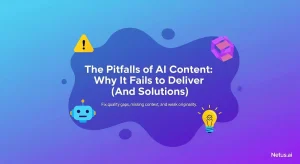
The shortcomings of content generated by AI | NetusAI
Discover why fast, high-volume AI content often fails to deliver real results. Learn about the crucial missing feedback loop and how implementing performance tracking can transform your AI content strategy.
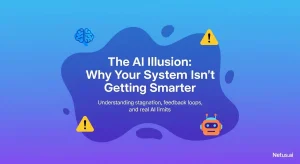
The illusion of AI: Your system's intelligence gap | NetusAI
Stop wasting marketing spend! Most AI tools don’t learn from results, causing content stagnation and low engagement. Discover why your generative AI isn’t getting smarter and what system actually learns and optimizes content.
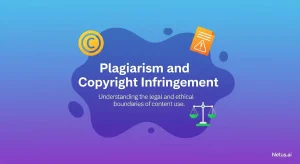
Plagiarism and copyright infringement | NetusAI
Learn the distinct differences between plagiarism and copyright infringement. Understand the ethical and legal implications and get practical strategies for avoiding both academic and creative work with NetusAI.

Tips and strategies for mobile content marketing | NetusAI
Optimized for mobile-first indexing, learn 5 essential strategies to capture attention, enhance engagement and drive leads and sales with your mobile content marketing.
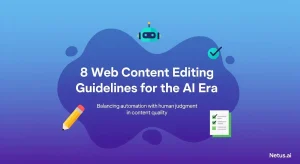
Web content editing guidelines for the AI era | NetusAI
Review web content editing guidelines for the AI era. Learn how to edit AI-generated content, ensure authenticity and optimize for SEO and readability.
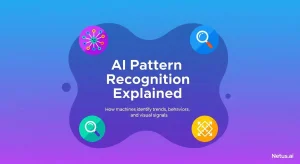
Explaining AI pattern recognition | NetusAI
AI pattern recognition enables machines to identify trends for diverse applications, from detecting plagiarism to fraud. Discover its processes, models and real-world benefits.
